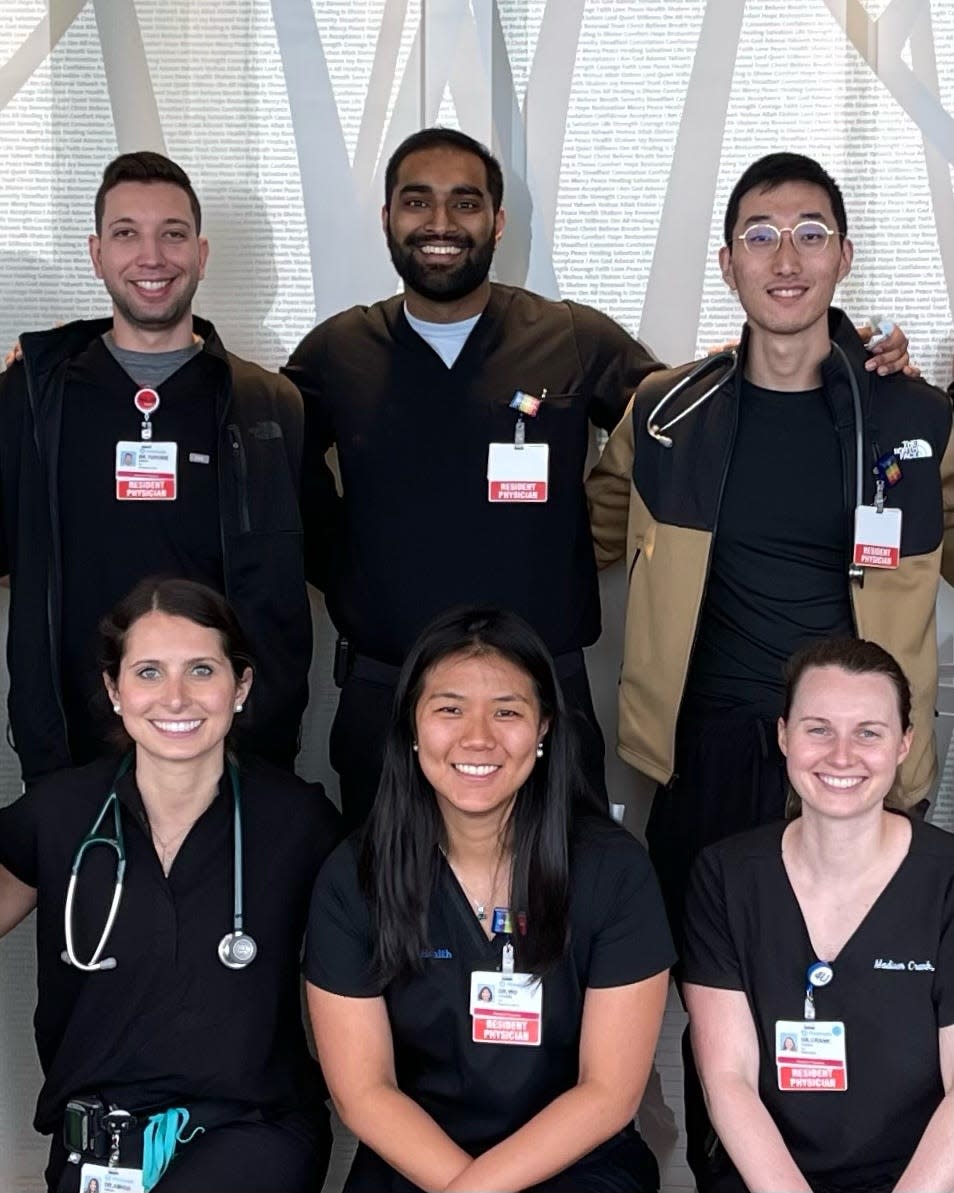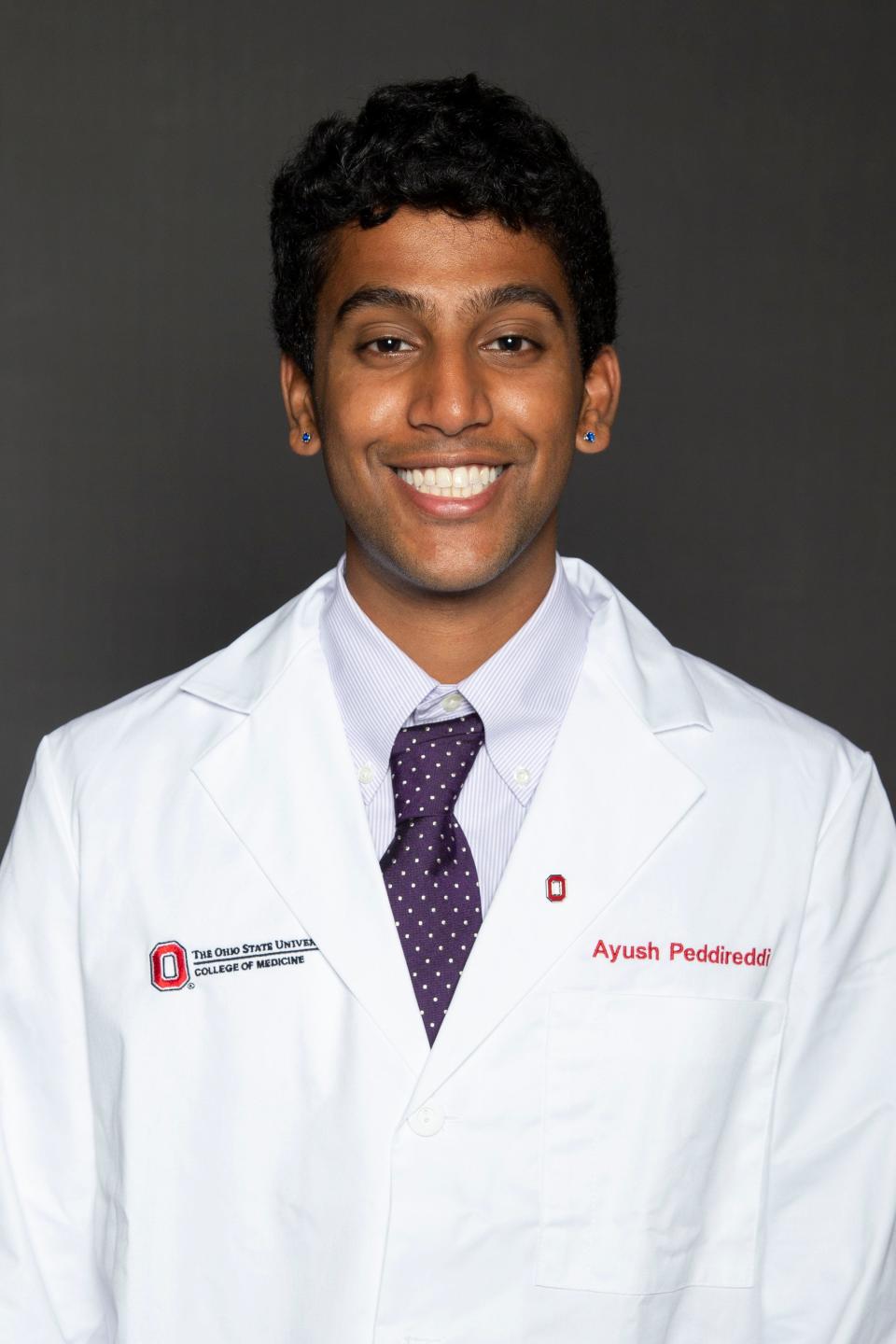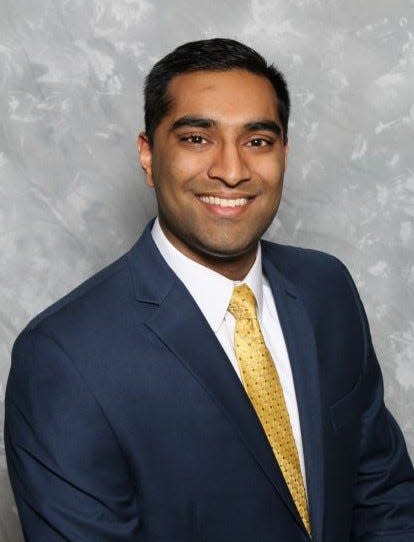There's a doctor shortage. Why aren't more medical students landing residencies? | Opinion

Ayush Peddireddi is a second-year medical student at the Ohio State University College of Medicine. The Centerville native has worked in biomedical research, medical journalism and regulatory medical writing.
Ramsi Katragadda knew after his third year of medical school that he wanted to pursue a residency in physical medicine and rehabilitation.
The specialty, primarily concerned with restoring physical function to the injured or disabled, aligned well with his longtime interest in sports medicine and musculoskeletal procedures.
Like so many others, the University of Toledo student submitted his application to the Electronic Residency Application Service in the fall of his fourth year.
From our archives: Ohio State med students learn their future during Match Day
After spanning nearly six months of essays and interviews, the residency process eventually culminates in the much-hallowed Match Day, where soon-to-be medical graduates across the country, in front of their peers and supporters, open sealed envelopes containing their future residency programs.
Match Day is a watershed moment in a medical trainee’s career and represents the culmination of years of effort and sacrifice.
Only four days away from his own Match Day, however, Ramsi received an unexpected news via email: he had not matched to a single physical medicine and rehabilitation residency program.
“It’s a pretty heartbreaking thing to go through because this is the culmination of your entire medical education," he said of the news.
Why aren't doctors finding matches?

Ramsi was hardly alone in his disappointment; in 2021, nearly 7% of U.S. Doctor of Medicine graduates did not match into any residency program.
For Doctor of Osteopathic Medicine grads, that amount extended to 10% of all graduates.
More:Decline of rural doctors may leave parts of Ohio with too few physicians
This is despite the fact that the United States is currently experiencing a physician shortage, with the deficit projected to reach anywhere between 54,100 and 139,000 physicians within the next 12 years.
Clearly, the former and latter are incompatible. So why the reason for this discrepancy?

One possible reason could be due to the fact that while U.S. medical schools have expanded enrollment (the number of M.D. and D.O. matriculants increased by over 5200 from 2012 to 2020), national residency programs have not followed suit.
The end result is a training bottleneck.
The impact of funding
To explain the latter’s stasis, one must look deeper at the funding for these programs. The predominant form of funding for resident graduate medical education comes from Medicare in the form of two Federal payments: the Direct and Indirect Graduate Medical Education programs.
The former is a direct payment to teaching hospitals that covers resident and supervisor salaries, while the latter is incorporated into Medicare inpatient reimbursement.
More:Ohio medical marijuana patients say prices too high, but program improving
In 1997, amongst budget concerns, the Clinton Administration introduced the Balanced Budget Act.
Amongst its provisions, it capped the number of fundable residents to a hospital’s current amount.
These caps remained largely unchanged before 2021, essentially freezing the amount of federally funded residency positions for nearly 25 years.
How the matching works and doesn't
In addition to residency funding, the process itself has been subject to criticism.
The Match, formally known as the National Resident Matching Program, utilizes an algorithm that incorporates both the ranking preferences of both interviewed applicants and programs in order to singularly match all involved parties with their highest ranked choices.
In 2002, a class-action lawsuit was filed against the American Association of Medical Colleges, alleging, that the match process was anticompetitive and offered residents no alternative for seeking better working conditions.
The suit, Jung vs. Association of American Medical Colleges, ultimately was dismissed with the federal government implementing a statute that protected the National Resident Matching Program from federal antitrust laws.
Still, efforts to improve the supply-demand problem have been recognized; in 2021, the $2.3 trillion Consolidated Appropriations Act earmarked funding for 1,000 new Medicare-supported graduate medical education slots beginning in 2023.
Another viewpoint, however, views the matching and shortage problem as not that of numbers, but instead of optimization.
While much of the attention surrounding the Match concerns graduates not matching into programs, it is important to note that programs themselves are sometimes left unfilled as well.
Last year, 2,262 of the 39,205 total positions were unfilled following the initial match, with 151 positions remaining unfilled even after the Supplemental Offer and Match Program.
It is no secret that specialties such as orthopedic surgery, plastic surgery, and dermatology are coveted and thus highly competitive, even amidst the incredible difficult feat of securing a post-graduate training position.
Geography of training also assumes an uneven distribution, with about 60% of residents located in the South and Northeast and 98% training in urban areas.

As of 2020, graduate medical education programs were located in a mere 525 counties out of the 3,142 total counties in the United States.
To truly maximize the teaching output, then, focus must be directed towards minimizing vacancies and incentivizing students to consider a broader range of both geography and specialties.
What can be done?
Dr. Alex Grieco, associate dean of student life at The Ohio State College of Medicine and vice chair of the Association of American Medical Colleges' Central Group on Student Affairs, advocates for “making improvements and optimizations of how students are matched to programs.”
Perhaps the door will be opened then, Grieco says, for looking at elements such as number of match positions.
To address these very concerns, several specialties have introduced a new component to their applications called "program signaling."
As its name suggests, the tool will allow applicants at the onset of the cycle to “signal” four programs in which they have a specific interest in interviewing at.
Program directors can subsequently see these signals (only for their school) and incorporate them in their decision to offer interviews.
By doing so, the hope is to align program and applicant interest earlier in the application cycle than the Match itself, a crucial step that returns some autonomy to physicians in a process that already affords them such little control- one’s residency placement essentially dictates the life choices of clinicians and their families for 3 to 7 years and largely determines where they will practice medicine for the rest of their careers.
With only four specialties incorporating the signal last year and 18 specialties doing so for this current cycle, the program is still very much in its infancy, with its long-term impact on outcomes unknown.
While Grieco still champions data as the driver of all best practices, he believes in the potential of optimizing the process – particularly given the “signaling” and multiple additional changes that have been implemented – to truly look at who wants to be there and fit at programs.
“Can we place students to make that a reality with the patients as the ultimate beneficiaries?”
A match
Following graduation, Dr. Ramsi Katragadda began an internship at Riverside Methodist Hospital while simultaneously reapplying to residency programs.
It was while discussing patient cases one day when Ramsi again received an important email: he successfully matched into a physical medicine and rehabilitation residency at Marianjoy Rehabilitation Hospital in Illinois.
“It was a huge relief, and I’m happy and grateful I get to pursue what I want," he said.
Despite being several years removed from his own Match Day, Grieco can vividly recall his own happy memories of the moment.
“To see where you're going to go and where you've been working and striving towards, hearing the cheers and feeling a tear of happiness.
That sort of accomplishment, in the communal sense, is about everything that you’ve done, not just from the beginning of medical school, but way before that.
It's basically since about fifth or sixth grade, differentiating and thinking and really understanding about yourself for the capacity that you possess to apply your own art and science to the art and science of medicine. It's literally phenomenal.”
Program signaling and increased Medicare funding undoubtedly represent important progress, but even more work must be done to increase the number and geographical distribution of practicing physicians in our country.
With a rapidly aging American population, healthcare utilization is only expected to increase in coming years; a proactive, multipronged approach is consequently needed to balance the interests of clinicians and the general public en route to best addressing the health demands of tomorrow.
Ayush Peddireddi is a second-year medical student at the Ohio State University College of Medicine. The Centerville native has worked in biomedical research, medical journalism and regulatory medical writing.
This article originally appeared on The Columbus Dispatch: Opinion: Why aren't more medical students finding residencies?

